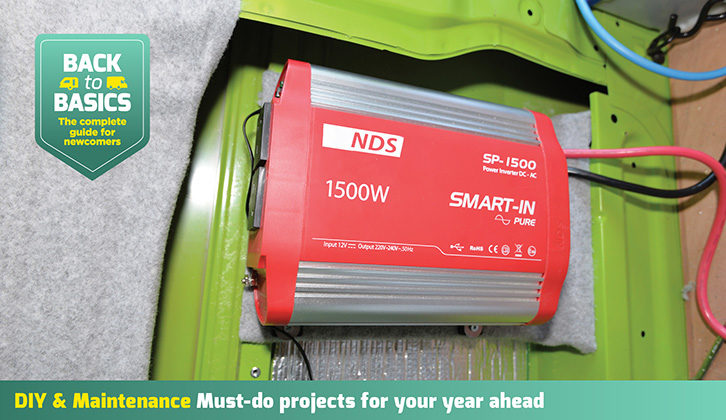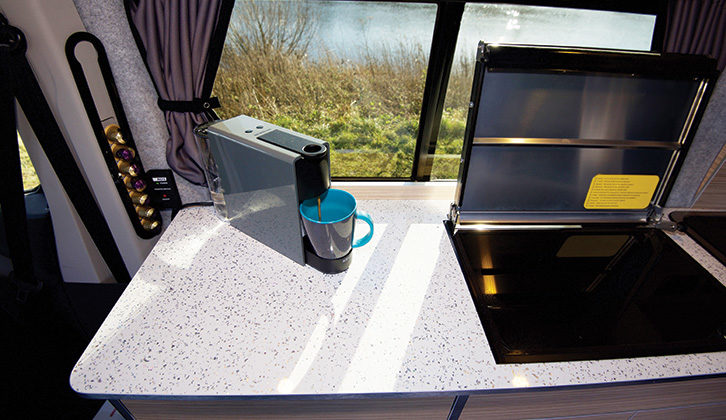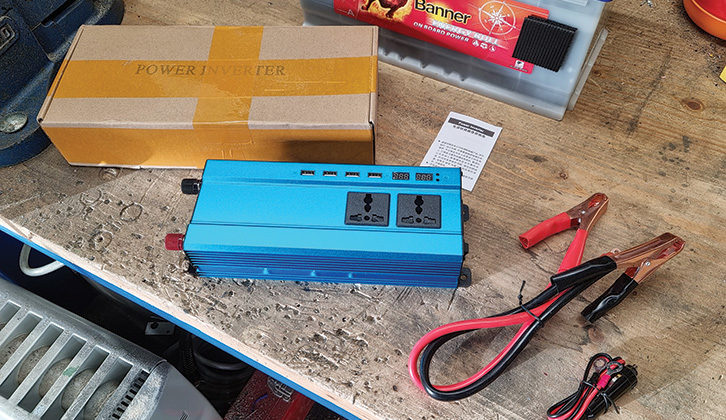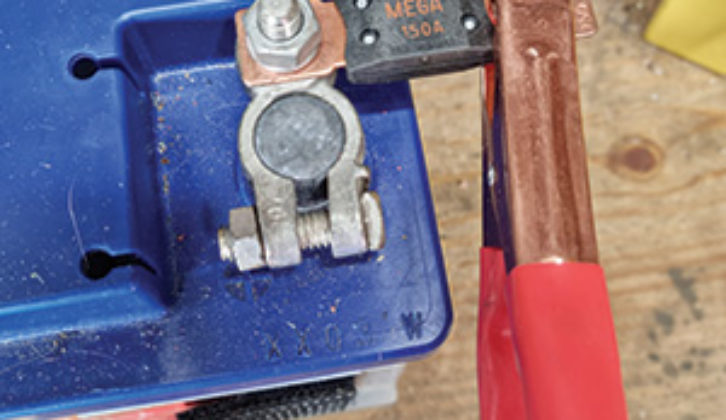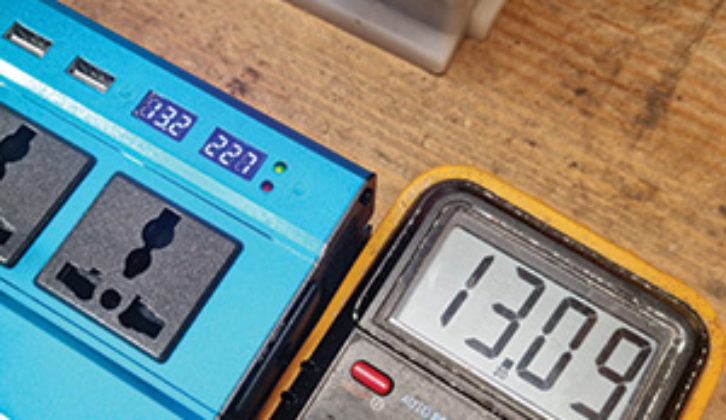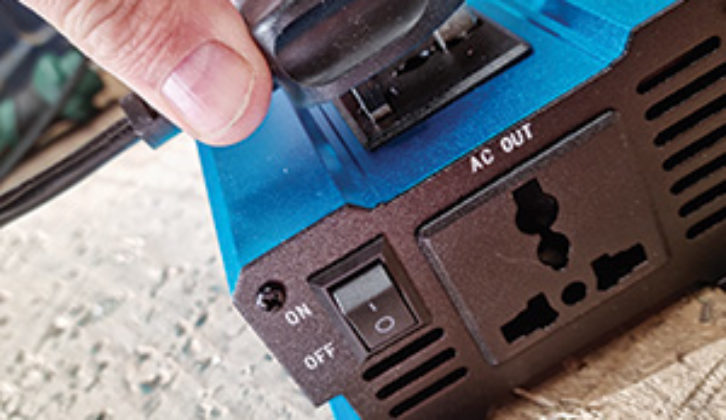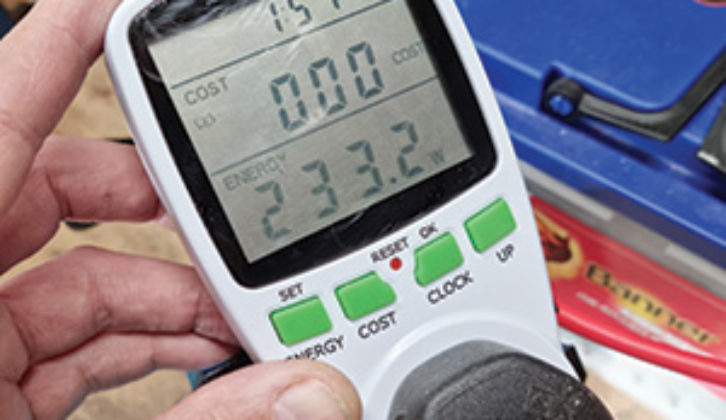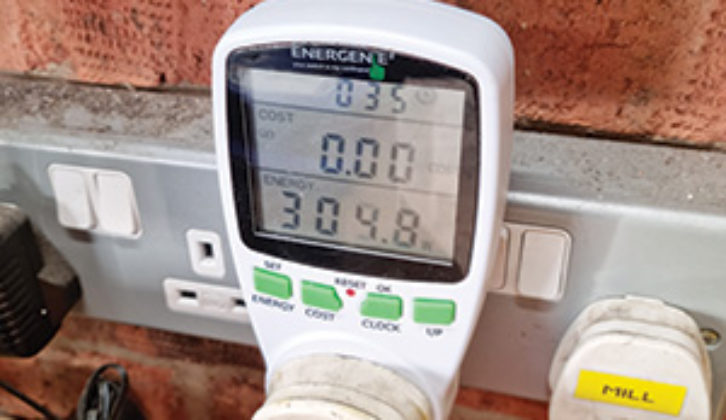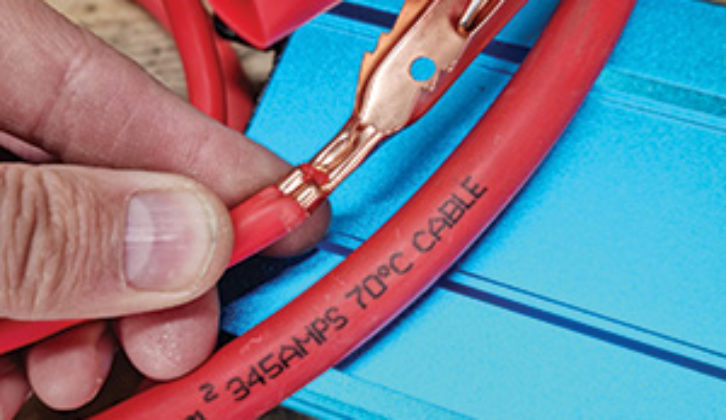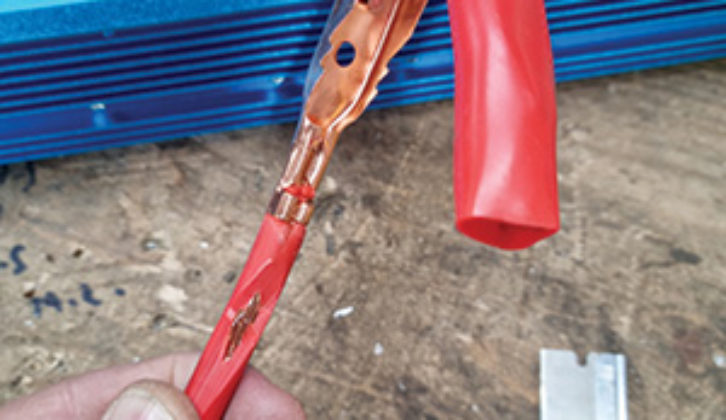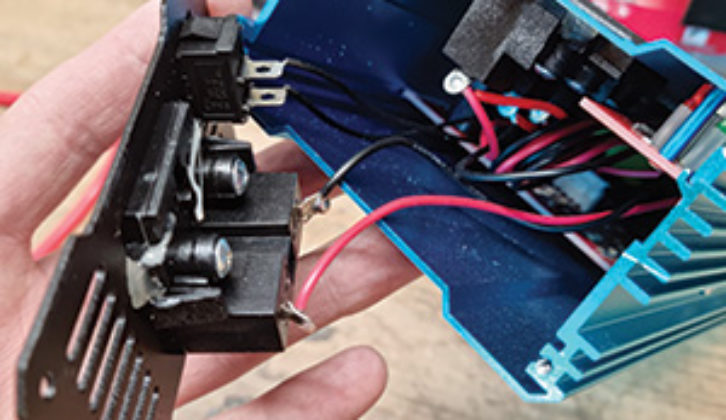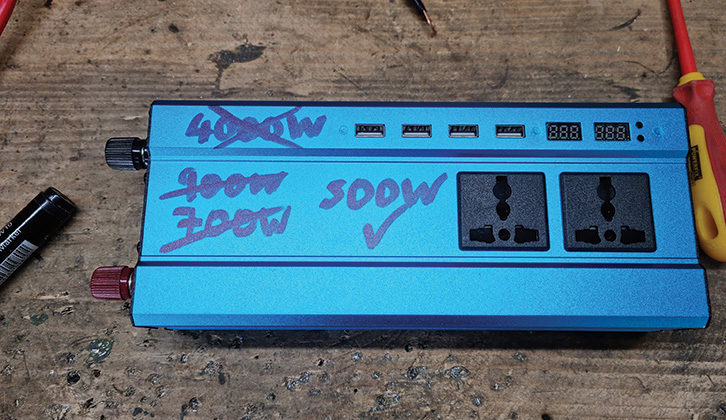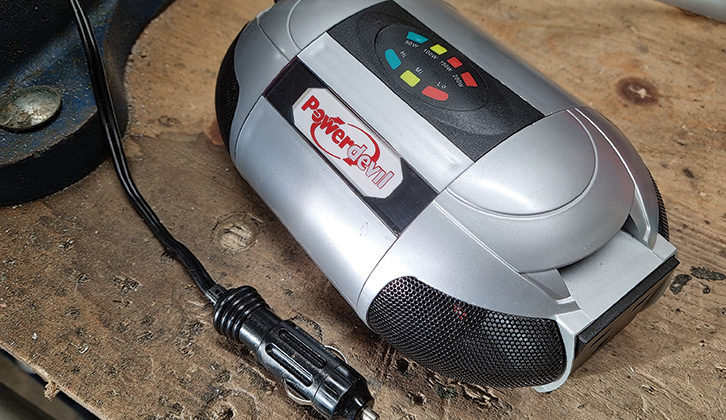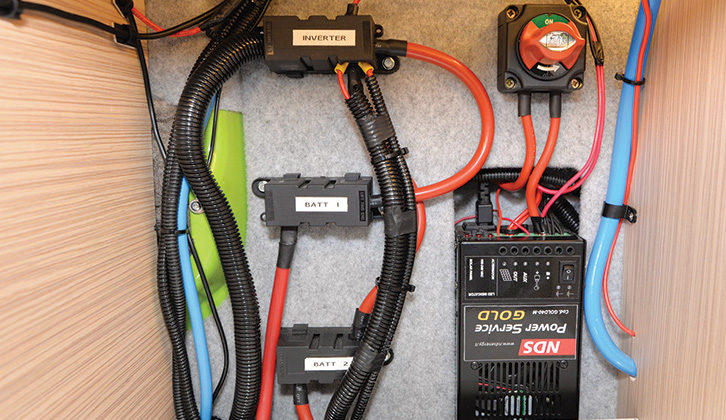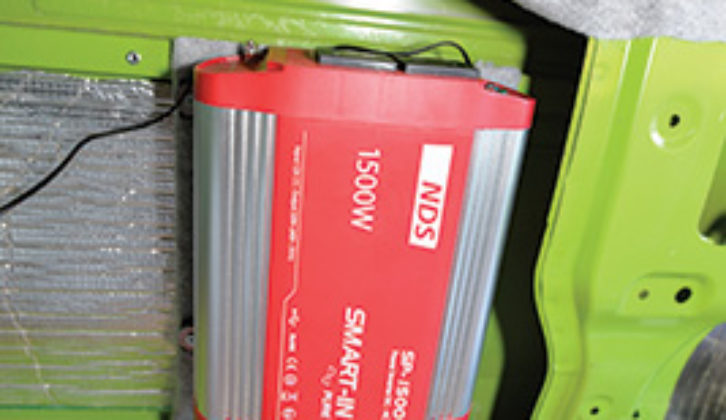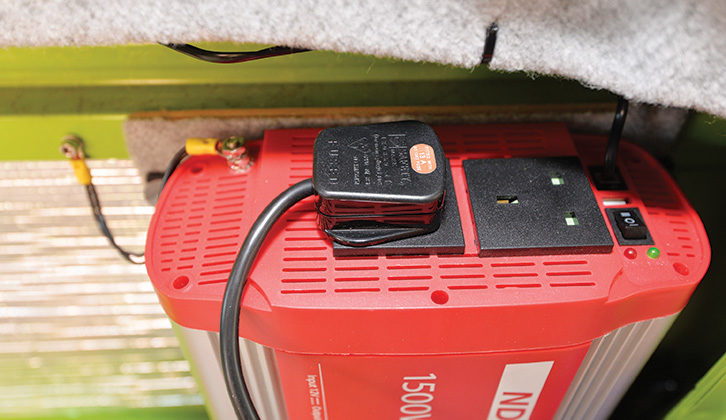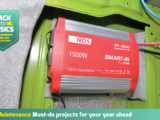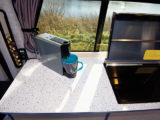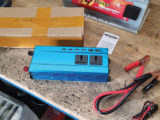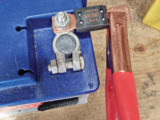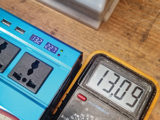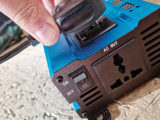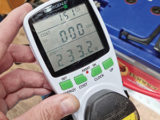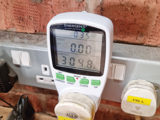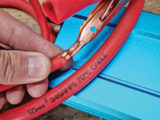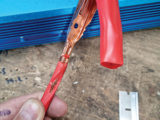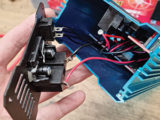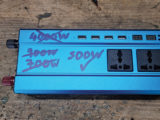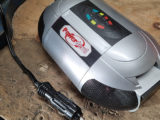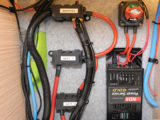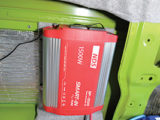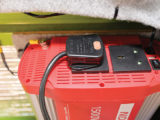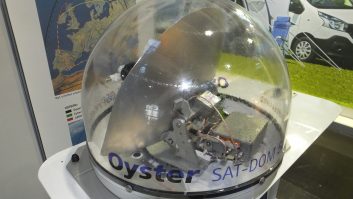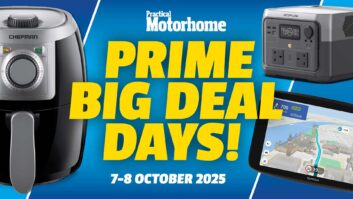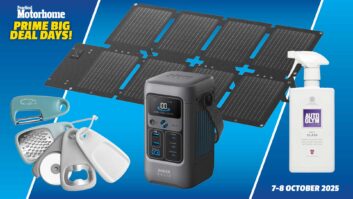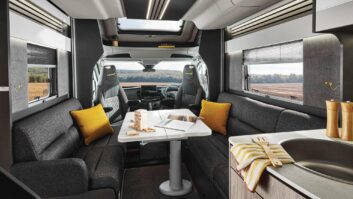The latest motorhomes come packed with electrical goodies, and these days, we tend to carry more devices while touring. From TVs to laptops, games consoles to ebikes, there is always a need for extra power.
But if you’ve asked yourself “do campervans need electric hook-up?” before, you will have found there is a way to run 230V AC power without a hook-up, or you’re wild camping? It’s easy with an inverter – but you need to be aware of a few things to help you pick the right one.
The 12V DC power from the best campervan leisure batteries powers almost everything in your ’van. The fridge, heater fan, lights, TV, water pump and toilet flush all rely on the battery to work. So being economical with your available power is key to surviving as long as possible without needing to plug into the mains.
Most electronic gadgets run on DC power, but may be partnered with a mains transformer to make them convenient to use in your house. TVs and laptops are common examples of these. While you can simply plug these into an inverter, the process of transforming power from DC to AC, then back to DC inside the device, wastes power (typically 5-20%). Inverters and transformers are not 100% efficient, so energy is lost in conversion. If you can power a TV or laptop, or other device, by buying a 12V adaptor lead, it will save energy.
Equally, if you have a device that runs off gas, such as a fridge, that will let you wild camp for longer than powering it off 12V, or an inverter.
Batteries and chargers
Inverters are powered from your leisure battery, and the amount of time the inverter can sustain 230V power is directly proportional to battery capacity. So you’ll need to increase that capacity as a first step, even if you don’t plan to use any high-powered mains devices.
At a minimum you need to double capacity, but if you have the payload, the greater your leisure battery capacity, the better. Bear in mind that extra or larger batteries are heavy and need to be subtracted from your payload. If you are short of payload, another option is lithium iron batteries, which are lighter and are claimed to offer deeper discharge cycles without damage.
If you choose lithium iron cells, make sure that your battery-charging system is compatible.
If you need to run an inverter and have large drains on your batteries, you’ll need to upgrade how they’re recharged, to avoid flattening them rapidly. The more current you take out of your batteries, the more you need to replace.
The best way to recharge batteries rapidly is a battery-to-battery charger. These use the excess current from your alternator to recharge your leisure batteries while the engine is on. They can produce massive current (40-60A is common) and are the most powerful rechargers available
– usually much faster than your motorhome’s built-in mains charger.
Another option is to use solar panels – fit as many to your roof as possible – but these produce a fraction of the power of a battery-to-battery charger; think of them as trickle chargers of highly variable output. A 100W panel typically produces around 5A in direct sun and this can dip to around a tenth of that in winter. So they won’t keep up with an inverter and high-drain items – hence the need for larger batteries. This is why, during winter, unless you have a massive solar array, it’s wise to plug into a mains hook-up.
Microwave menace
Of all the electrical items you can carry in your vehicle, microwaves are one of the trickiest to run with an inverter – in fact, you may have asked yourself, can you run a microwave in a campervan? They require a lot of power (much more than their rated capacity) and their initial switch-on current can be three to seven times higher than their input rating, making them a serious load. This is why most firms only supply them powered by a mains hook-up.
If you do want to operate a microwave on an inverter, bear in mind that the current coming out of your leisure batteries will be epic while they’re in use (typically around 140A for an 800W inverter – you can weld with less).
This might be fine for a minute to zap a mug of milk, but for longer cooking – say 10 minutes plus – the energy use will be massive. A draw of 140A can flatten a 100Ah battery in under 30 minutes. So think carefully when it comes to running a microwave off an inverter. Do you really need to, or will a gas hob or oven suffice?
How to size an inverter
Inverters are rated by their continuous power output and their instantaneous (or peak) power output. Peak power is the short-duration power they can supply: whenever a switch is thrown and a device starts up, there is a surge, or peak, in its output. So for example, a 1000W heater might have a very short peak of 2000W for a fraction of a second when it is switched on. It is the continuous power rating of the inverter that needs to be used when you are sizing one.
To find out how large an inverter you need, check the label on any device you wish to power. It’s best to run one device at a time, especially if they’re high-powered items, but lower-powered devices can be run simultaneously (take note of the total power consumption). The labels indicate the item’s continuous consumption rating.
So for example, my domestic 900W-output microwave’s label states it needs an input power of 1450W, so will need an inverter of at least 2000W continuous to power it. The rule of thumb is that whatever the microwave’s output, it will need an inverter with a continuous power rating of at least double.
Equally, a 1300W coffee machine will need an inverter supplying at least 1500W continuously. It will also need to be pure sine wave, as they’re another tricky load.
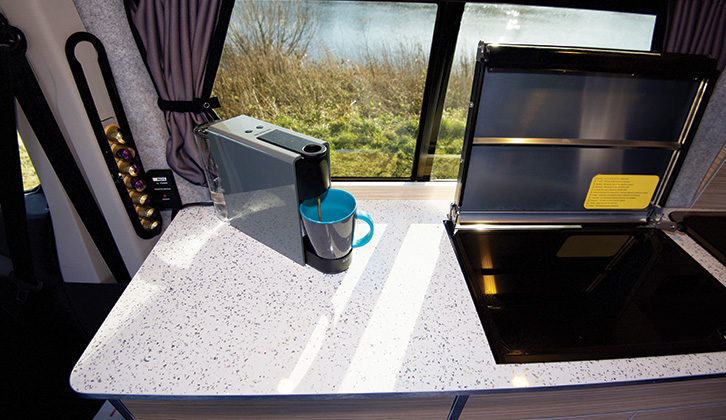
You always need to allow a little extra power for the inverter, to account for the fact they’re not 100% efficient (they’re typically 85-90%).
Owing to this inefficiency, it’s best to go for an inverter that’s only just above the size you need – running a 500W item on an inverter rated continuously for 2000W will waste power. It’s like a large car engine idling – if you don’t need the power, why have it draining your batteries?
Pure sine wave inverters
There are two main kinds of inverter: modified (or quasi) sine wave and pure sine wave. Pure sine wave inverters are needed for delicate electrical items, or tricky electrical loads such as coffee machines and electric toothbrushes, and are more expensive to make than ‘modified sine wave’ inverters.
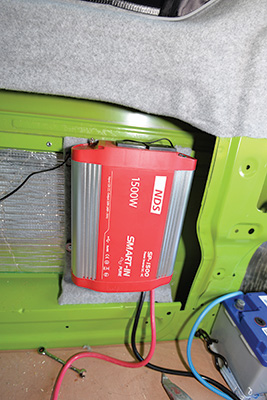
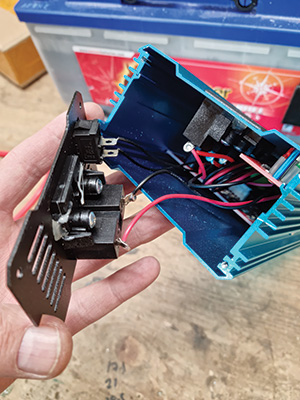
Some unscrupulous makers (mainly the super-cheap ones supplied direct from overseas) have realised they can sell an inverter for more if they claim it is a ‘pure sine wave’ inverter. So if it’s suspiciously cheap, chances are, it’s probably not a pure sine wave inverter. We’d highly recommend only buying from a trusted UK source.
Electrical safety
Of all the electrical items you can add to a ’van, an inverter can be considered one of the most challenging from a safety standpoint.
These simple boxes contain mains AC electricity at current that can kill, as well as DC at such a high current that it could be used for welding. So it is very important that they are wired up correctly and fused. You can’t have enough fuses in an electrical system, and these simple wire strips are life-saving devices. The job of a fuse is to protect devices and wiring. Omit a fuse and there is a risk of melting cables and causing a fire. Inverters are the most current-heavy items you can attach to a 12V battery. Omit fuses at your peril.
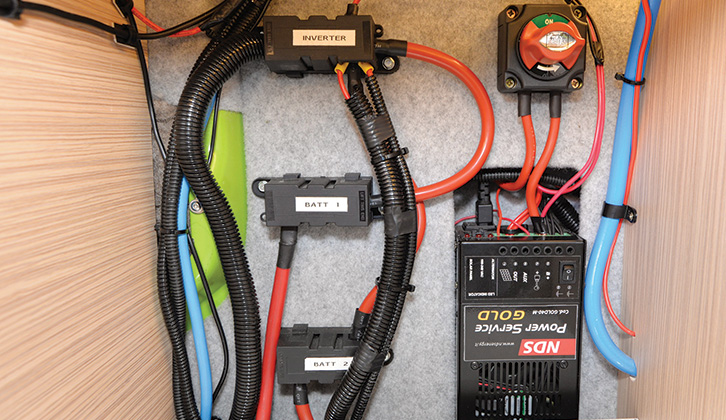
Many inverters are supplied with wiring, and this doesn’t always include a fuse on the positive lead. Some even include unfused crocodile clips – if these are supplied, bin them immediately. Some come with aluminium cable (cheaper than copper) – do not use these as they have higher resistance. Halfords sells a wide range of cable, or your can order cable online, fitted with terminals.
Inverters must use wiring of the correct gauge, and must be permanently wired in place with a fuse fitted inline as close to the positive battery terminal as possible. Mega fuse holders are needed for inverters and these can be supplied with fuses rated for any inverter.
Some smaller inverters come with a 12V cigar socket – only use these on a 12V socket powered from your leisure battery, to avoid them draining down the vehicle battery. Don’t plug them into the socket in the cab. Bear in mind that a 120W inverter will draw at least 10A, so is highly likely to blow a cigar-lighter fuse if used at full power.
The fuse rating needed depends on the inverter capacity and the cabling you use. For example, 50mm squared cabling has a maximum current load of 117-147A, so would need to be protected by a 125A fuse. You can find cable-rating tables online. Fuses are designed to protect cables. No fuses means the cable will become the fuse, melt and then set fire to surrounding material. Bad!
Typically, a 1500W inverter will need a 150A mega fuse. The mega fuse rating is its working continuous current, but they’re designed to cope with the peak power load of switch-on, so typically blow at double their rated current. This all happens in a fraction of second, so isn’t anything to worry about.
The current from inverters can be large with high-current devices, so it’s important to place the inverter as close as possible to the batteries and to keep cable runs as short as possible. This reduces the temperature and voltage drop in the cables. Modern battery cable has the continuous current rating stamped on the insulation – your fuse rating must never exceed these markings.
If your inverter needs a higher-rated fuse, increase the cable diameter to suit. In general, if in doubt about cable size, go up a size.
If your motorhome’s layout means the inverter is some distance from the leisure batteries, you will need to increase the diameter of your cabling to allow for this, and for larger inverters – over 2000W – it’s not a good idea to have cable runs over 2m. It might be wiser to move the batteries to the inverter, in some cases.
Powering existing 230V sockets
The easiest way to use an inverter is by its built-in sockets, or to run wiring to a dedicated inverter socket. If you want to run them to your existing sockets, it’s a little more complicated and you’re strongly advised to seek professional help with the wiring. This is to avoid problems with the RCD switches tripping and the risk of supplying double voltage to a socket. Some inverters have a built-in priority switch, to allow them to switch to a mains hook-up when plugged in.
Having an inverter wired into all of the mains sockets encourages you to run more items via the inverter and risks rapid battery draining. So for simplicity and power economy, it’s easiest to use dedicated inverter sockets (and label them).
Cheap inverters
Most inverters are made in China and many are excellent. However, others are badly made to a price, and stamped with fake CE and testing labels. At best, they’ll fail early and be inefficient. At worst, they’ll cause a fire. We’d recommend that you only buy from your local motorhome dealer, a UK shop, or a UK or EU-based online retailer.
Case study
To try out a cheap inverter, I sourced a cheap ‘pure sine wave’ 4000W model direct from China, tested it, then dismantled it. The website where I bought it stated it was 4000W peak, had a rated power of 2000W (which doesn’t mean anything) and could supply 500W or 900W continuously, depending on which bit of the website you read.
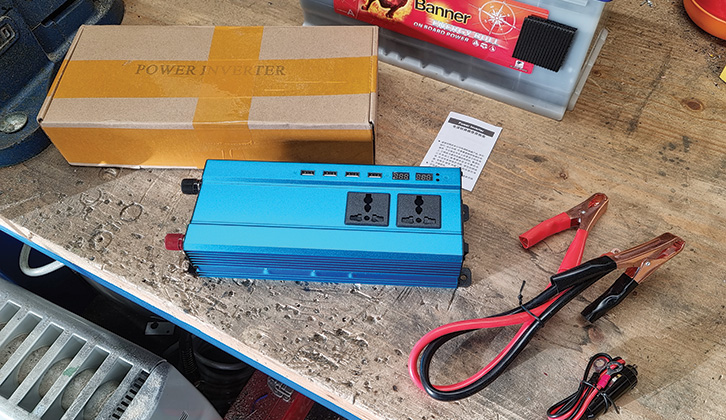
It looked suspiciously small when it arrived.
I rigged it up to a fully charged 100Ah Banner leisure battery, then measured the power of the items I connected to it. My voltmeter measured the battery at 13.09V, while the inverter displayed the voltage as 13.3V – not too bad. Sadly, the two 230V plug sockets on top of the case didn’t fit any plugs, so only the side socket was any use. I used a power meter to measure the actual watts of the items I tested. First up, a soldering iron at 30W, followed by a 233W battery-charger. It managed both fine.
Next, a tougher test – my lathe, which the meter measured at 305W (with much higher start-up loads). The lathe spindle did half a turn, then the inverter beeped and shut off. At least its overload facility worked.
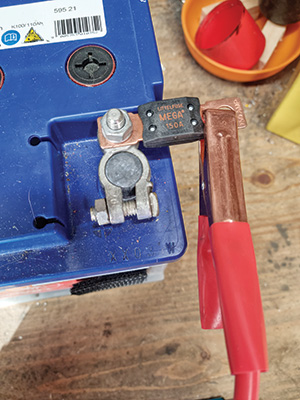
a mega fuse was used. Remember, no fuse = fire risk.
I then tried my 710W grinder, which seemed to run slower than usual and only drew 239W. Finally, I tried the workshop heater, which has a separate fan and variable heater element up to 2500W. It ran the fan, but as soon as the heater element was switched up, the inverter cut out. The maximum it managed was 677W for about a second. Given its performance, I’d say it could just about do 500W continuously, but not reliably for any length of time. It certainly wouldn’t do anything like 4000W peak. It’s clearly not a pure sine wave model, either.
At this point, the inverter’s wires had heated up, so I removed them and cut them open. The copper stranding was thin, with an extra-thick casing. With no fuse supplied, in my opinion they could be a fire risk if used.
Inside, there was very little separation between the 12V and 230V elements, no earth wires on the plug pins, very thin wires throughout and an uninsulated metal case. If a 230V soldered wire vibrated loose in transit, the case could become live.
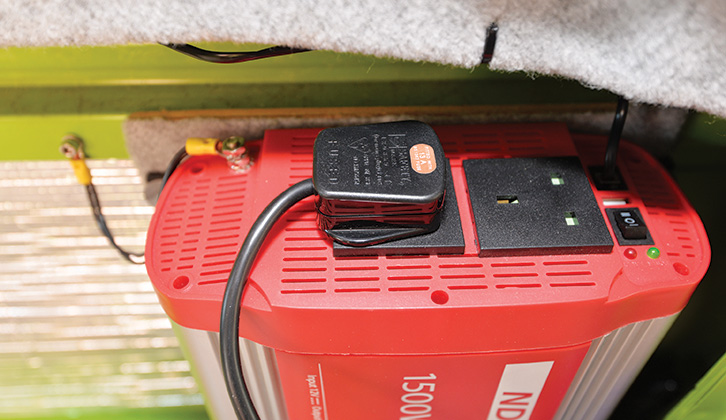
In contrast, the same money will buy a 500W Streetwize inverter from Toolstation (peak output, 1000W) that has a proper earth stud and two built-in fuses, and has passed CE testing.
Verdict
Inverters should be used sparingly – especially for high-powered devices – and sourced from a reputable supplier. It’s worth opting for a pure sine wave, branded model. It must be fused as close to the battery as possible, using cable of the right thickness. We’d recommend professional fitting if you’re not confident with wiring or you want them to power existing sockets.
Looking for more great DIY inspiration? Then be sure to head to our Back to Basics – DIY & Maintenance category, where we’re sharing simple projects that could make all the difference when you’re on tour!
Future Publishing Limited, the publisher of practicalmotorhome.com, provides the information in this article in good faith and makes no representation as to its completeness or accuracy. Individuals carrying out the instructions do so at their own risk and must exercise their independent judgement in determining the appropriateness of the advice to their circumstances. Individuals should take appropriate safety precautions and be aware of the risk of electrocution when dealing with electrical products. To the fullest extent permitted by law, neither Future nor its employees or agents shall have any liability in connection with the use of this information. You should check that any van warranty will not be affected before proceeding with DIY projects.
If you’ve enjoyed reading this article, why not get the latest news, reviews and features delivered direct to your door or inbox every month. Take advantage of our brilliant Practical Motorhome magazine SUBSCRIBERS’ OFFER and SIGN UP TO OUR NEWSLETTER for regular weekly updates on all things motorhome related.
